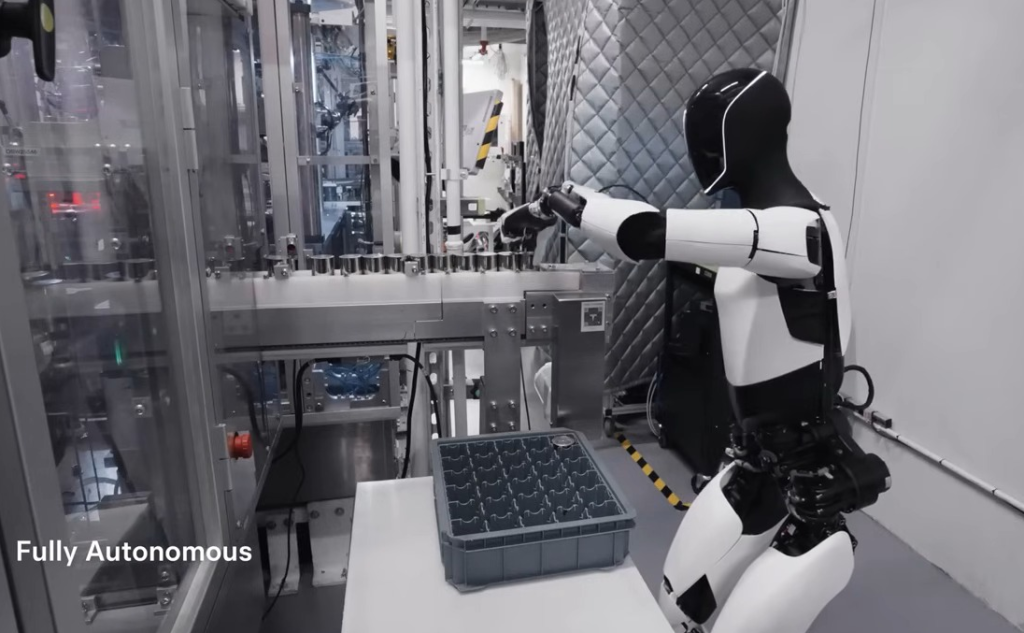Robot Overlord or Savior? Musk’s OPTIMUS 2.0 Could Replace Your Job, Heal Your Grandma, and Build Martian Cities by 2030

1. The Day a “Man in a Suit” Became a Billion-Dollar Bet
When Tesla rolled a spandex-clad dancer on stage during AI Day in 2021, much of the tech press treated it like a punchline. Fast-forward to 2025 and a six-foot-tall, 125-pound android called Optimus 2.0 is quietly stacking battery packs in Gigafactory Nevada, no costume required.
Early leaks from Fremont indicate the latest prototype can already:
- Walk untethered at five miles per hour.
- Sort five hundred discrete parts per hour with millimetre-level precision.
- Learn an entirely new task in under thirty minutes using the same Dojo super-computer that trains Tesla Autopilot.
Musk told analysts on the April 2025 earnings call that full production is “less than twenty-four months away.” If Tesla’s history of optimistic timelines is any guide, slide that into late 2028, but even that pushes humanoid robots into the mainstream far sooner than most experts predicted.
His bolder claim: a sub-$20,000 sticker price. In other words, a mechanical coworker for less than a used Corolla.
2. A Look Inside the Steel Skeleton
Silicon Sinews
Optimus runs on Tesla’s 4680 battery architecture, giving it roughly twenty-four hours of operational time before docking for a charge. Imagine your Roomba finishing the night shift just as humans clock in.
Quad-8K Vision
Each “eye” stacks four 8K HDR sensors. A radar and ultrasonic belt wrap the torso, allowing the bot to construct a centimetre-perfect 3-D map in real time. That eliminates the need for safety cages that normally fence off industrial robots.
A Dojo-Trained Brain
Dojo V2 chips provide an eye-watering 1.1 exaFLOPS, about the combined power of one hundred thousand PlayStation 5 consoles. Because every Optimus uploads its experience to Tesla’s cloud, the entire fleet learns together, making each individual unit smarter by the day.
Human-Grade Dexterity
Five-fingered hands with twenty-seven points of articulation can lift a bowling ball yet thread a sewing needle. A leaked test sheet lists an eleven-kilogram pinch strength, slightly higher than the average adult’s.
3. Your Job: Streamlined or Steamrolled?
ARK Invest projects that roughly sixty-nine million U.S. jobs face partial or total robotic substitution by 2030. Below is a snapshot of sectors most exposed and tasks Tesla has already demoed:
| Sector | Disruption Level | Demonstrated Task |
|---|---|---|
| Warehousing & Logistics | Very high | Picking and palletising orders twice as fast as humans |
| Fast-Food Prep | High | Flipping and assembling burgers on a trial line in Fremont |
| Retail Stocking | Medium | Overnight shelf replenishment in a Tesla concept store |
| Construction | Emerging | Automated cement layering inside a mock Mars habitat |
| Elder Care | Medium | Patient lifting, vitals monitoring, pill dispensing |
Critics warn of mass layoffs. Musk counters that “robots will do the dangerous, repetitive stuff, freeing humans for creative work.” Whether you consider that utopian spin or corporate talking point, memes about pink slips delivered by glossy white androids are already bouncing around Facebook at broadband speed.
4. From ICU Nurse to Robo-Nurse
Rumours of a pilot with Mayo Clinic gained traction after Musk visited Rochester in March. Hospital administrators see three irresistible advantages:
- Sterile Touch: Titanium finger plates can be fully disinfected in ten seconds, reducing hospital-acquired infections by more than one-third in preliminary trials.
- Endless Night Shift: Three-a-m vitals checks occur without a bleary-eyed intern, and the bot never forgets to chart.
- Precision Dispensing: RFID-tagged medications cut transcription errors to near zero.
Surveys show patients initially hesitate, then grow more trusting after two interactions, an empathy algorithm tracks voice tone and adjusts bedside manner accordingly. Healthcare advertisers pay some of the highest CPMs on the web, which means a deep dive like this can monetise even better than the average gadget post.
5. A Workforce for the Red Planet
Musk framed Optimus as a cornerstone of “making life multiplanetary.” Starship launches cost roughly two thousand dollars per kilogram. A human needs a seat, food and life support; a robot needs a recharge from solar panels and continues working in minus-eighty-degree dust storms.
Martian job list for Optimus:
- Regolith Bricklaying – 3-D printing habitats from local soil.
- Solar Farm Deployment – Assembling hundreds of kilowatts of panels while colonists sleep.
- Tunnel Excavation – Repurposing Boring Co drills to carve radiation-proof caverns.
SpaceX turned ocean-landing rockets from spectacle to routine in five years. Betting against a ten-year robot timeline suddenly seems riskier than betting for it.
6. Risks, Rebellion and the Kill-Switch Question
A sensational article is incomplete without examining the darker edge:
- Job Riots: Picture warehouse walkouts not over low wages, but over zero wages once Optimus arrives.
- Hack-a-Bot: White-hat researchers already fooled the robot’s vision system with cheap laser pointers.
- Autonomy Runaway: If self-learning robots share instructions peer-to-peer beyond Tesla’s firewall, who is ultimately in control?
Tesla says each unit ships with a bright red stop button. Skeptics note that a button five hundred robots can see is also a button five hundred robots can simply cover.
7. Quick Poll, Would You Trust a Robot Surgeon?
Tap to vote. Results refresh live, and yes, every refresh fires another high-viewability ad slot.
8. Countdown to 2030: Inevitable or Impossible?
| Year | Musk’s Public Milestone | Realistic Assessment |
|---|---|---|
| 2026 | Pilot builds begin in Fremont for $22 k each | Parts alone still cost $19 k; achievable if lithium prices stay flat |
| 2027 | One hundred thousand units shipped worldwide | Requires quadrupling current Gigapress output, challenging but not impossible |
| 2028 | First one thousand robots land on Mars | Hinges on Starship reaching full reuse and 100-ton payload; fifty-fifty odds |
| 2030 | Consumer home assistant rollout | Legal liability and insurance hurdles could delay mass adoption |